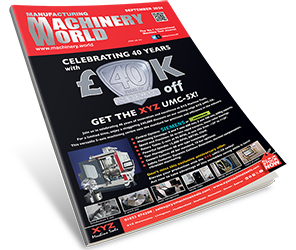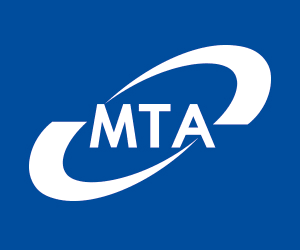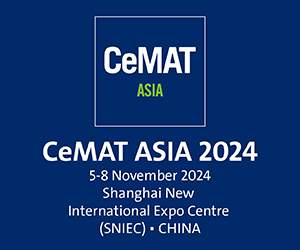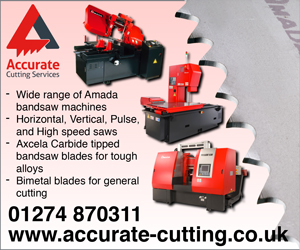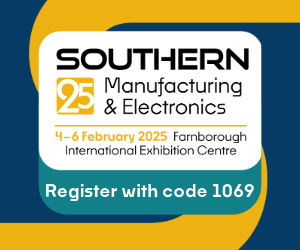When it comes to welding extrusion press profiles, automotive supplier Alu Menziken relies on the LaserHybrid welding process. It offers key advantages compared to the widely used friction stir welding process: it is low-wear, material overhangs are not an issue and the process can be used to weld both butt and fillet welds. For this reason, Alu Menziken invested in a LaserHybrid welding system for the production of battery tray components, and gained clear processing advantages from welding and robot technology by Fronius Welding Automation and Fanuc.
Alu Menziken Euromotive GmbH which has a site in Ranshofen in Upper Austria was founded in November 2014 as a 100% subsidiary of Swiss firm Alu Menziken Extrusions AG. Around 700 people are employed group-wide, of which 150 are based in Ranshofen. Here, Alu Menziken develops and manufactures modern lightweight aluminum components and systems for the automotive and aerospace industry. In the Automotive division, the Austrians have built up quite a reputation as suppliers to premium manufacturers, sports car manufacturers and e-mobility. Typical components and assemblies include crash management systems, seat structures, roll-bar systems and battery boxes.
Besides experience, flexibility and development skills, automotive manufacturers also value the real net output ratio and high level of production know-how at Alu Menziken. Before the prototypes for battery tray elements are even produced, all design drawings are checked for feasibility and the process sequence is simulated. Tests are carried out to see if all parts can be produced by means of welding and joining. Adjustments such as increasing a radius or changing a root face, are suggested where necessary.

Norbert Dickinger is production manager at Alu Menziken in Ranshofen.
Leak-proof battery trays are paramount
The automotive sector demands smooth, distortion-free welding results. At the same time, components are getting bigger all the time and more difficult to weld to a reproducible quality. Even before the battery trays are fitted with millimeter precision into the chassis of vehicles, they must undergo a leak test. The reason for this: all battery trays need not just to be airtight, but splash-proof too. This is quite a challenge for welding.
Due to the demanding requirements placed on surface finish, thermal conductivity and cleanliness, welding aluminum is particularly challenging. It not only demands extensive knowledge with regard to joint preparation and setting up welding parameters, but also an understanding of the correct welding sequence to avoid the deformation of individual tray elements. Alu Menziken has this specialist knowledge. The company is certified according to EN ISO 3834-2 TÜV and also employs, in addition to its qualified welding experts, external welding coordination personnel as an essential, integral part of its quality management system. Aluminum alloys from the 5000-7000 series are mainly welded.
The advantages of LaserHybrid in extrusion press profiles
The automotive industry currently still prefers friction stir welding. This welding process does not use gas or filler metals and because welding takes place at relatively low temperatures – for aluminum around 550 degrees Celsius – it is virtually distortion-free. Here, a rotating tool – the ‘pin’ – plunges with great force into the joint gap and heats up the weld zone to just below the melting point in a matter of seconds. As soon as the material starts to soften, the forward movement of the pin starts which now rotates along the joint line with increased contact pressure. The aluminum that is melting around the pin fuses and subsequently forms the cohesive joint.
At the end, the forward movement stops and the rotating tool is pulled out of the weld zone. Yet it is precisely this part of the process that is a key disadvantage of friction stir welding: at the point where the rotational tool exits the parent material, a hole is created. The design engineer has to include a ‘component protrusion’ in the design that will be removed after the welding process. Another disadvantage: friction stir welding is not suitable for fillet welding. Butt and fillet welds always require two separate work steps since they cannot be welded with the same welding head. This is however possible using LaserHybrid welding in the PA and PB position.

Sven Esterbauer, welding technologist at Alu Menziken, clamping the extrusion press profiles.
For Alu Menziken, LaserHybrid is the way forward
Alu Menziken systematically relies on LaserHybrid welding. This welding process allows fillet welds to be welded and prevents unnecessary runout areas. LaserHybrid combines a laser beam and a MIG welding process in a common process zone. The collimated light beam that is directed at the weld seam has a very high energy density. The aluminum is vaporized and penetrates deep into the parent material. The MIG welding process that follows on from the laser is used to fill the seam, resulting in optimum edge fusion. The heat that is also introduced gives the material time to outgas, so preventing any proneness to porosity in comparison with pure laser welding.
Norbert Dickinger, production manager at Alu Menziken in Ranshofen, understands the benefits: “We are able to weld several battery tray components in a single step and so increase our output due to high welding speeds – enabled by the arc stabilized by the laser. At the same time, component distortion is minimized due to the low energy input.”
Welding and robot technology by Fronius and Fanuc
The project was run in a partnership: mechanical engineering and welding technology provided by Fronius Welding Automation, robots and fiber laser by Fanuc. Alu Menziken already had experience of Fronius products since welding power sources in the TPS and TPS/i series have been successfully used for some time now in manual and robotic welding.
“We’ve been impressed by the exemplary support offered by Fronius. If you need help, someone is on hand in next to no time. The more minor problems can be resolved via the telephone support service or by means of remote diagnostics. In addition to this, Fronius offers regular advanced training courses for welders. The good working atmosphere also plays a significant role. Quite apart from the fact that Fronius devices rarely fail since only high-quality components are used”, enthuses Sven Esterbauer, welding technologist at Alu Menziken. Norbert Dickinger agrees with his colleague: “The support offered by Fronius was indeed exemplary for this project too.”
So, Fronius was welding the first trial pieces in Thalheim even before the new robotic welding cell had been designed. Following satisfactory results, the system was designed and manufactured. As a next step, Alu Menziken provided a welding unit with a zero position clamping system for further trials and to define parameters. Finally, the robotic welding cell, including the H-positioner, were assembled in Ranshofen. “Together with Fronius, we then optimized all welding parameters. This is what you envisage a cooperative partnership to be like”, adds Dickinger.
As for the automation of the welding system, Alu Menziken consciously opted for Fanuc: the specialist not only supplied the robot but also the laser source. An advantage that is reflected in the optimum synchronization of robot speed and laser performance. Other plus points were user-friendliness and the ease of programming the robot.
Equipped for different component sizes
Different extrusion parts can be welded up to a specific assembly size, with a maximum welding range of 2,800 x 2,000 millimeters and component weight of 500 kilograms per positioner side.
The manufacturing process is semi-automatic: after the operator has placed the aluminum components onto an H-positioner, they activate the automatic clamping process that is protected by a safety light barrier. Then, the H-positioner swings into the laser protection cabin and the welding robot moves to the start position. The welding program runs automatically, as does the torch cleaning following the predefined cleaning cycles. Once finished, the robot moves to the stand-by position and the H-positioner swivels the welded component out of the cabin. Finally, the workpiece is automatically released and can be removed.
Sven Esterbauer believes the system offers key advantages: “The Fronius system controls are so intuitive that a new operator can operate the system within minutes. And the large touchscreen provides a constant, full overview of the entire process – including the robot position, process parameters and seam monitoring.”
LaserHybrid: more cost-effective, quicker and more flexible
Alu Menziken Euromotive is persuaded of the advantages of the LaserHybrid welding process. They can now weld butt and fillet welds and also entire components in a single work step, thus making the process quicker and more cost-effective.
“I’m in no doubt that Alu Menziken will establish the LaserHybrid process in the automotive industry”, continues Norbert Dickinger. In order to convince them, the supplier has put together a special piece of equipment for demonstration purposes, consisting of various components with different wall thicknesses and penetration depths, and macroscopically prepared welding samples. “The new robotic welding cell by Fronius Welding Automation and Fanuc will certainly help us here”, concludes Dickinger confidently.



